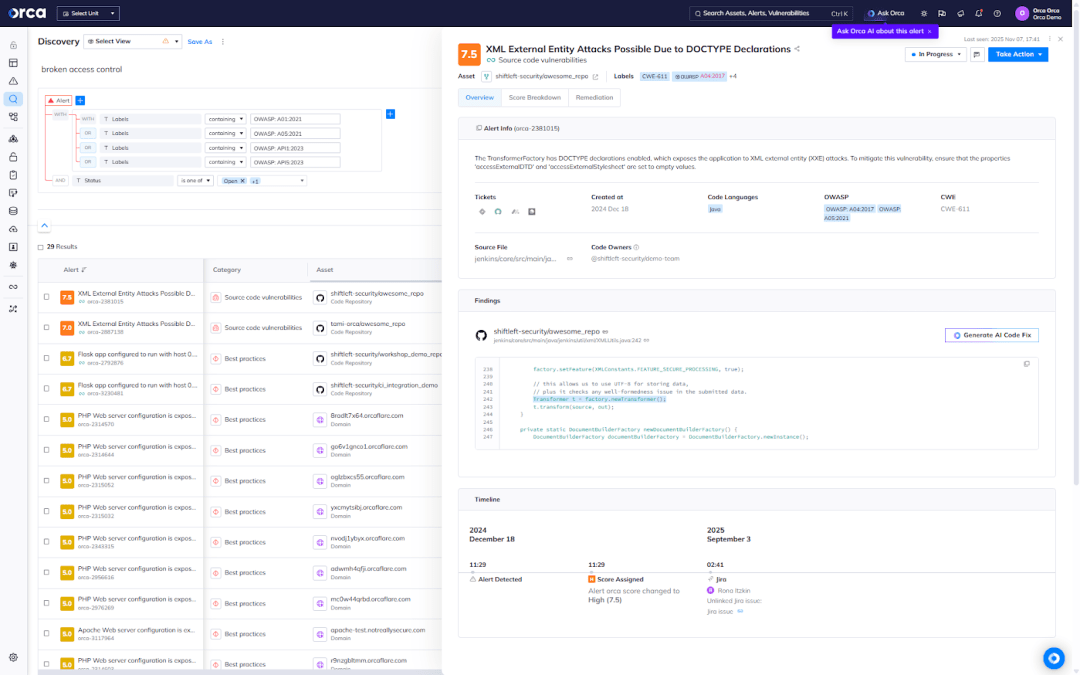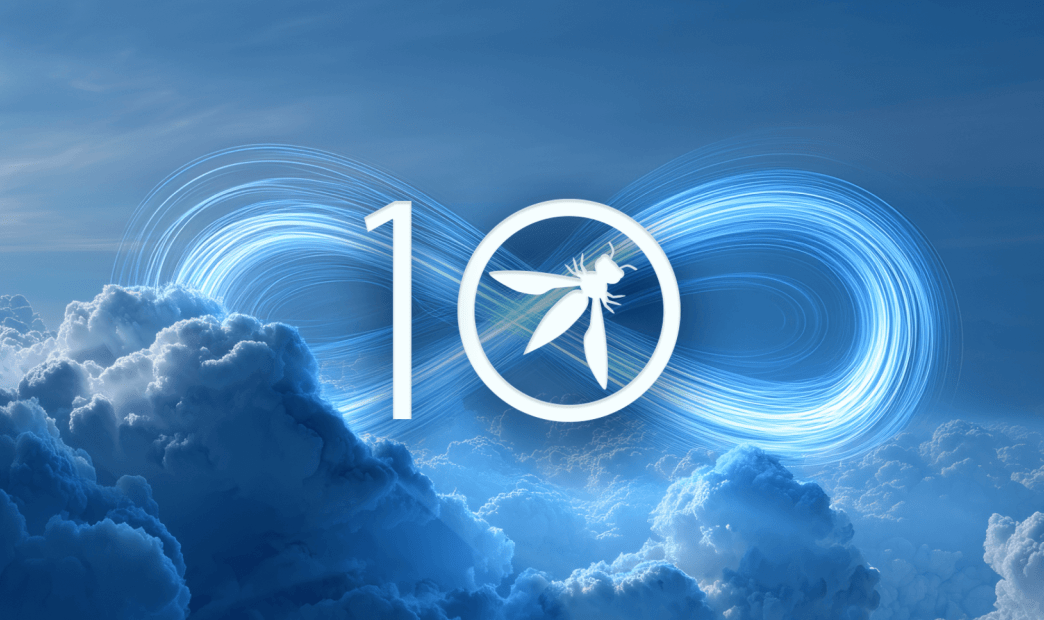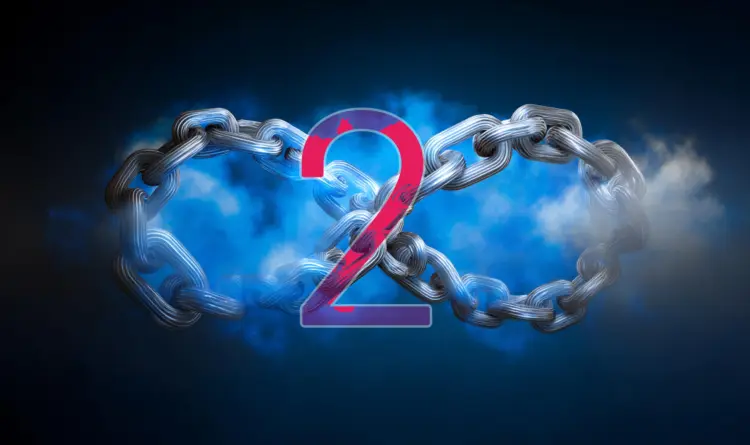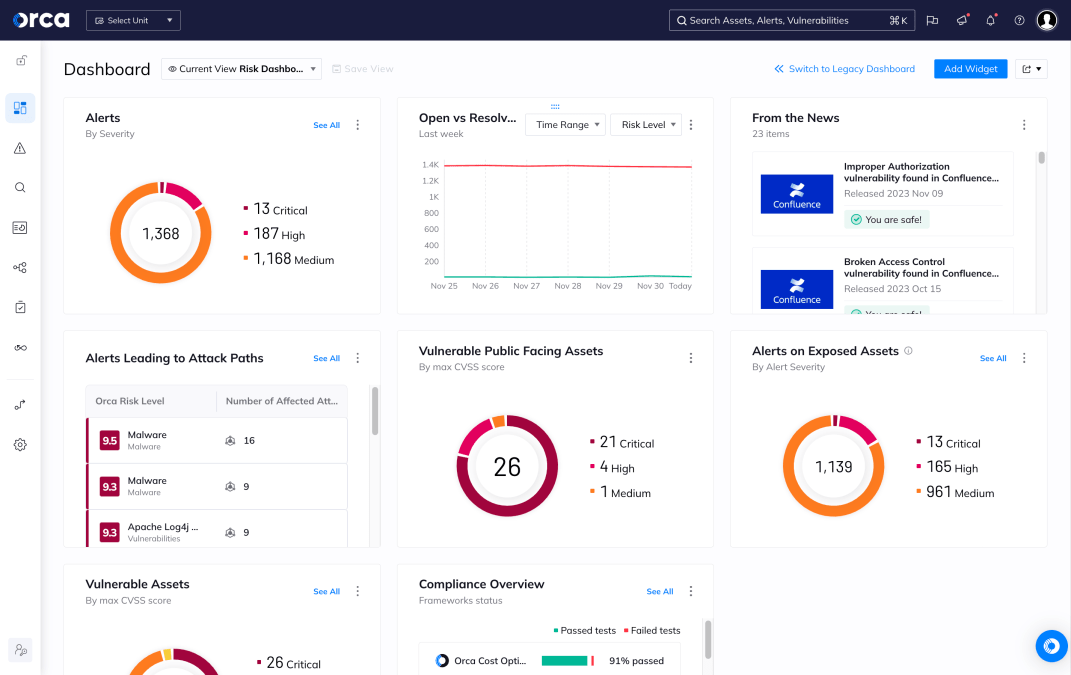The OWASP Top 10 2025 release candidate is here, marking an important milestone in the evolution of application security best practices. Published for public review and revision, this candidate list offers an early look at the most critical risks shaping today’s application landscape before the final version is ratified.
As one of the most trusted resources in the AppSec community, the OWASP Top 10 helps security teams focus on the vulnerabilities most likely to impact modern applications. The 2025 release highlights a shift toward identifying root causes rather than symptoms, emphasizing how today’s threats often originate from design flaws, misconfigurations, and dependency-level weaknesses that ripple across complex software ecosystems.
Orca Security is proud to have partnered with OWASP project leaders to contribute our unique data and insights to the project.
Compared to the 2021 version, two new categories have been added, one has been consolidated, and several have been refocused to reflect today’s most pressing risks.

The new OWASP Top 10:2025 categories are:
- A01:2025 – Broken Access Control
- A02:2025 – Security Misconfiguration
- A03:2025 – Software Supply Chain Failures
- A04:2025 – Cryptographic Failures
- A05:2025 – Injection
- A06:2025 – Insecure Design
- A07:2025 – Authentication Failures
- A08:2025 – Software or Data Integrity Failures
- A09:2025 – Logging & Alerting Failures
- A10:2025 – Mishandling of Exceptional Conditions
A few key trends stand out in this year’s update:
- SSRF was merged into Broken Access Control, reflecting the significant impact that server-side request forgery has on access controls. This change highlights how, in modern applications, the line between service-level and user-level access is blurring—a direct consequence of the widespread use of microservices, cloud services, and APIs.
- The “Vulnerable and Outdated Components” category has evolved into “Software Supply Chain Failures,” broadening its scope beyond known vulnerabilities to include unknown vulnerabilities introduced by third-parties. Supply chain attacks have become both more frequent and harder to detect, as they often exploit trust in dependencies, open source, and outsourced services.
- A shift from symptoms to root causes defines the 2025 update. OWASP explicitly states that it aims to focus more on root causes rather than symptoms. For example, where the 2021 list included “Sensitive Data Exposure” (a symptom), the updated list identifies “Cryptographic Failures” (a root cause). Similarly, “Software Supply Chain Failures” expands the prior component-vulnerability concept to encompass the entire software lifecycle.
A closer look at the OWASP Top 10 2025
Let’s explore each of the new and updated categories to understand what has changed, and why these shifts matter for modern AppSec programs.
A01:2025 – Broken Access Control
Broken Access Control remains the top risk in the OWASP Top 10:2025, affecting virtually every tested application. Compared to 2021, new attack methods have emerged, making this the category with the highest number of mapped CWEs. It covers issues like privilege escalation, insecure direct object references, CORS misconfigurations, and token manipulation, with SSRF (Server-Side Request Forgery) newly added to this group. These flaws allow unauthorized access or data exposure, reinforcing the need for strict, server-side access controls and denial-by-default policies.
A02:2025 – Security Misconfiguration
Security Misconfiguration rose from #5 to #2 in the OWASP Top 10:2025, with every tested application showing some form of misconfiguration. As software becomes more configurable, the risk has grown, with over 719,000 mapped CWEs, such as CWE-16 (Configuration) and CWE-611 (XXE). This category covers issues like exposed default accounts, unnecessary services, insecure permissions, missing security headers, and misconfigured cloud storage. Common examples include unremoved sample applications, verbose error messages, and open cloud permissions.
Preventing this risk requires automated, repeatable hardening processes, minimal platform setups, secure configuration management across all environments, and regular verification of security settings.
A03:2025 – Software Supply Chain Failures
Software Supply Chain Failures (A03:2025) is now a top community concern, with 50% of respondents ranking it #1. It has evolved from 2013’s “Using Components with Known Vulnerabilities” into a broader category covering build, distribution, update, and tooling compromises. Although only 11 CVEs map to related CWEs, the category shows the highest average incidence rate (5.19%) in contributed testing data and more than 215,000 occurrences. Key drivers include obsolete or unmaintained components, non-updateable dependencies, insecure CI/CD, and poor change tracking.
You’re at risk if you don’t maintain an SBOM, track transitive dependencies, remove unused packages, automate vulnerability scanning and patching, harden and monitor developer tooling and CI/CD (with separation of duties and signed/immutable builds), and enforce least privilege and MFA on repos, build servers, and artifact stores. High-impact examples (SolarWinds, Bybit, GlassWorm) show why organizations must inventory, triage, and remediate supply-chain risks continuously.
A04:2025 – Cryptographic Failures
Cryptographic Failures (A04:2025) dropped to #4, emphasizing weaknesses from missing, weak, or misapplied encryption that expose sensitive data. With over 1.6 million occurrences, common issues include outdated algorithms, predictable randomness, poor key management, and missing TLS enforcement. As cryptography has become easier to implement through modern APIs and cloud-managed certificates, many failures now stem from misuse rather than absence.
Preventing this risk requires strong, up-to-date encryption standards, authenticated encryption modes, secure key storage and rotation, adaptive password hashing, and enforcing encryption for all sensitive data in transit and at rest.
A05:2025 – Injection
Injection (A05:2025) slipped to #5 but remains a critical, well-tested risk, affecting 100% of tested applications, with the largest number of CVEs across all categories. Injection is driven by frequent XSS (high-frequency, lower-impact) and rarer but devastating SQL injection (low-frequency, high-impact). It occurs when untrusted input is treated as code or query structure (SQL, NoSQL, OS commands, LDAP, EL/OGNL, etc.), and is best prevented by separating data from commands: use safe/parameterized APIs or ORMs, employ positive server-side validation, context-aware escaping only when necessary, and add SAST/DAST/IAST + fuzzing in CI/CD.
Note that injection threats in LLMs are now tracked separately. Organizations should address both traditional interpreter injection and emerging AI prompt-based threats in their threat models.
A06:2025 – Insecure Design
Insecure Design (A06:2025) dropped to #6, reflecting progress in secure design awareness but continued weaknesses in application architecture and business logic. Unlike insecure implementation flaws, insecure design stems from missing or ineffective security controls that can’t be fixed by perfect code. Common causes include poor threat modeling, lack of security requirements early in design, and failure to anticipate unwanted states or misuse cases.
A07:2025 – Authentication Failures
Authentication Failures (A07:2025) holds its #7 spot with a refined name and 36 mapped CWEs, emphasizing persistent weaknesses in login and session management despite widespread use of frameworks. Common issues include hard-coded or weak passwords, missing MFA, poor credential recovery, insecure session handling, and exposure to brute-force or credential-stuffing attacks. These flaws often arise from weak password policies, improper session invalidation, or reliance on outdated practices like password rotation.
A08:2025 – Software or Data Integrity Failures
Software or Data Integrity Failures (A08:2025) remains at #8 and focuses on situations when systems trust code or data without verifying provenance or integrity; for example, unsigned updates, unvetted plugins/CDNs, or CI/CD pipelines that accept artifacts without checks. These failures let attackers inject malicious code or tampered data (including insecure deserialization) and are distinct from broader supply-chain issues because they focus on integrity verification at the artifact/data level.
A09:2025 – Logging & Alerting Failures
Logging & Alerting Failures (A09:2025) continues to rank at #9, with a new emphasis on alerting as a critical part of detection and response. Though underrepresented in CVE data, these failures severely impact visibility and incident response. Common issues include insufficient or inconsistent logging, unmonitored or tamperable logs, missing alerts for suspicious activity, and excessive false positives that overwhelm SOC teams.
A10:2025 – Mishandling of Exceptional Conditions
Mishandling of Exceptional Conditions (A10:2025) is a new addition to the OWASP Top 10, addressing poor error and exception handling that leads to unpredictable or insecure behavior. It focuses on failures like improper input validation, incomplete error recovery, “failing open,” and inconsistent exception handling, which can result in crashes, logic flaws, data corruption, or denial-of-service. With 24 CWEs, including leaking sensitive errors (CWE-209) and failing securely (CWE-636), this category highlights the risks of not planning for abnormal conditions.
How Orca can help
Orca Security is a proud contributor to OWASP initiatives, including OWASP Top 10 2025 and the OWASP Top 10 for Non-Human Identities. Through these collaborations, Orca provides data-driven insights that help shape industry benchmarks and improve understanding of cloud-native application risks.
Within the Orca Cloud Security Platform, organizations can:
- Detect and remediate risks that map directly to OWASP Top 10 categories across their cloud, container, and application environments.
- Leverage comprehensive Application Security (AppSec) capabilities to catch vulnerabilities, misconfigurations, and secrets before they can reach production environments.
- Trace risks from Cloud-to-Dev, enabling full visibility from deployed workload to the code origin and owner of an alert.
- Leverage OWASP-aligned frameworks, dashboards, and alert labels that make it easy to visualize exposure and measure compliance against these industry standards.
- Stay ahead of emerging threats through coverage of related benchmarks, including the OWASP AI Security Top 10.

By unifying visibility from code to cloud, Orca helps security teams operationalize the OWASP Top 10 and measurably reduce risk at scale.
Learn more
Interested in learning about the benefits of the Orca Cloud Security Platform? Schedule a personalized 1:1 demo.
Table of contents
- A closer look at the OWASP Top 10 2025
- A01:2025 – Broken Access Control
- A02:2025 – Security Misconfiguration
- A03:2025 – Software Supply Chain Failures
- A04:2025 – Cryptographic Failures
- A05:2025 – Injection
- A06:2025 – Insecure Design
- A07:2025 – Authentication Failures
- A08:2025 – Software or Data Integrity Failures
- A09:2025 – Logging & Alerting Failures
- A10:2025 – Mishandling of Exceptional Conditions
- How Orca can help
Table of contents
- A closer look at the OWASP Top 10 2025
- A01:2025 - Broken Access Control
- A02:2025 - Security Misconfiguration
- A03:2025 - Software Supply Chain Failures
- A04:2025 - Cryptographic Failures
- A05:2025 - Injection
- A06:2025 - Insecure Design
- A07:2025 - Authentication Failures
- A08:2025 - Software or Data Integrity Failures
- A09:2025 - Logging & Alerting Failures
- A10:2025 - Mishandling of Exceptional Conditions
- How Orca can help




